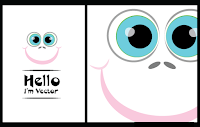UNIT 78: Digital Graphics for Computer Games.
Research Exercise
Computer Game Graphics:
Pixel art(2D/3D Isometric Sprites)
Sprites are 2D bitmaps that are directly drawn to the render target without any transformations or lighting effects. Old games such as Mario mainly consist of these sprites. This is because they can be used to make a 2D animations. The only use of 2D sprites in this modern age are for HUD's (HeadsUp displays). For example Health/xp bar, mini-maps etc.
3D Isometric Sprites are basically 2D sprites but the editor has added a lot of depth to it to make it look 3D. The purpose behind 3D isometric Sprites are to make it look more appealing and stand out to the player. Games that only consist of 2D shapes and animations can be really boring.
The Advantages of using 2D sprites are: easier to make and take up less storage. Where as it doesn't look very appealing in comparison with 3D isometric Sprites. The examples below show typical examples of 2D sprites when it comes to gaming and the HUD's within the games .


Concept Art:
Concept art is vital when it comes to games development. This is because you gain access to edit anything when ever it is necessary. Another useful advantage of concept art is constructive criticism. This when you show what you have done so far. This person will then tell you what went well and whats needs changing to make it even better. You then go away and make these improvements. This is very use full with game design as you want your game to be spot on and any bad creations will be dealt with in this way. You are also able to create things like mood boards etc to help you come up with different variations characters that will suit the environment you will be creating.
Within games there are multiple subjects where graphical art is needed; this is when the creation of: Characters, Vehicle, Weapons and most importantly the Environment. Without any of these features a game wouldn't be playable and wouldn't be able to go very far. The purpose of these features is to enable the player to interact with the game itself making it more appealing.
Texture/Background Art:
Texture art is when a graphics designer is trying to make a virtual object within a game look as realistic as possible. Most often developers don't actually make the details themselves. They use photo-realism. This is when the creator goes out and takes a picture of something and directly uploads it to the game. The purpose of this is to make the game look as realistic and appealing as possible. Background art is added to make the game look more interactive and makes the player actually think he or she is there.
User Interface:
User interface also known as HUD is vital within gaming. This is because it informs you on statuses within the game. User interface often uses 2D sprites. It often portrays information like your Health points, inventory UI and story progression. The purpose of this is to help the gamer keep knowledge and track of where they are and what is going on within the game. The image below is a perfect example of user interface. This is because it is easy to see and stands out from the game it self. This is good because it allows the players the focus more on the game itself without constantly trying to find out how much health he or she has or ammo.


Print Media Art:
Print media art is basically advertisement. Advertisement is really important as it gives your work/game publicity. The more publicity the bigger your game community will be. This includes: Trailers, Game Packaging etc. This is important as it helps make money that'll help towards making the game.
Raster/Vector Images:
A raster image is an computerised image where if you zoom in far enough you will be able to see individual pixels within an image. This is because Raster Images are made up of a set grid of dots called pixels where each pixel is assigned to its own 8bit colour sequence within the RGB. This makes these images completely resolution dependent. However you are unable to do this with a Vector image. This is because vector images use basic geometric shapes that allow them to be scaled up and down without losing quality.
<------Raster Vector------>
Where and When you would use these images:
Vector images should be used throughout the process of advertisement such as logo designs and print works such as posters and brochures are uses of vector images. They use software's likes adobe illustrator etc. Their file types consist of: .PSD .WMF .FLA and .AI. Raster images can be used for blueprints and print outs, they could also be used for background images.
File types:
Raster:
- .bmp: .bmp is also known as a single bitmap image. It is used to store bitmap images.
- .gif: .gif is a lossless format that allows animation and static images.
- .jpg: .jpg is a file format that compresses the image file size. The more it is compressed the lower the quality is.
- .tiff: .tiff is a tag image format that is used for transferring raster images between different application programs.
- .psd: .psd is a Photoshop image that is saved to be customised due to it being a proprietary file.
- .ai: .ai is an adobe illustrator file that is proprietary used to represent single paged drawings.
- .pdf: .pdf is a portable document format. It allows people to view, navigate, print or forward it to somebody else.



















